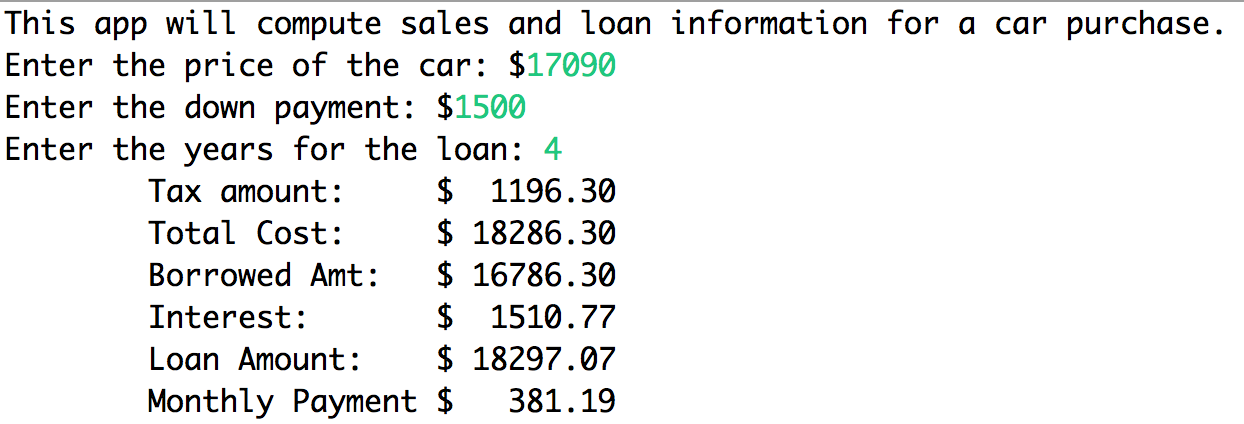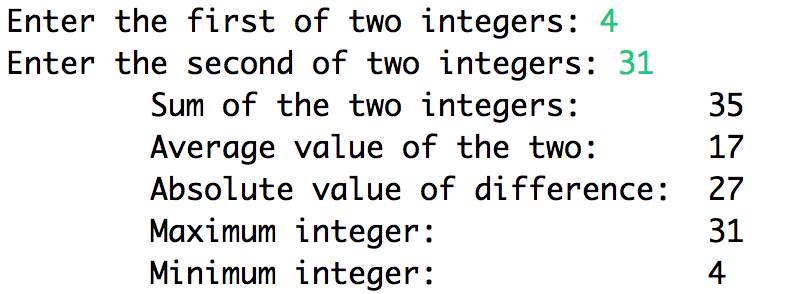Remember...
|






|
Enter the number of pennies, nickels, dimes, and
quarters saved at the end of Week 1. Enter after each number: 8 2 5 3 Enter the number of pennies, nickels, dimes, and quarters saved at the end of Week 2. Enter after each number: 4 3 3 5 Enter the number of pennies, nickels, dimes, and quarters saved at the end of Week 3. Enter after each number: 8 5 6 3 Enter the number of pennies, nickels, dimes, and quarters saved at the end of Week 4. Enter after each number: 5 2 7 6 Over four weeks you have collected 25 Pennies, 12 Nickel(s), 21 Dime(s), and 17 Quarter(s). This comes to $7 .20 Your weekly average is $1.80. Your estimated yearly savings is $93.60 |